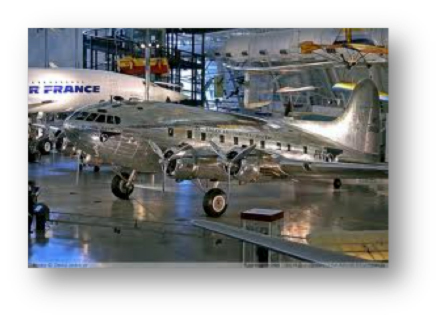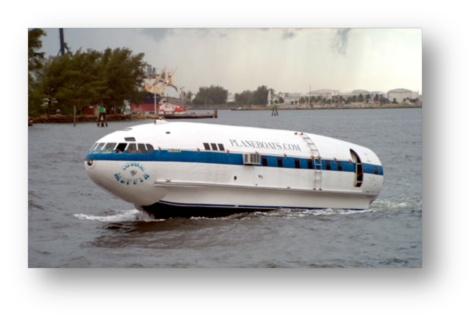Continental Airlines – Part Three – December 2, 2011
Continental Airlines – Part Two – November 25, 2011
November 25, 2011Transocean Airlines Revisited – December 16, 2011
December 15, 2011“Robert Novell’s Third Dimension Blog”

(http://www.flugzeuginfo.net/acdata_php/acdata_boeing_307_en.php)
Good Morning—hope that your week was productive and you are ready for the weekend. This week I am going to finish up with the series on Continental Airlines and next week we will talk about the merger of Continental with United; however, before we move on to our story let’s talk about the Boeing-307.
The Boeing-307 Stratoliner was the world’s first pressurized high-altitude commercial transport and the first four engine airliner to enter scheduled domestic passenger service in the US; in addition, it was the first airplane to have a flight engineer as a member of the crew. The Stratoliner also had a twelve foot wide cabin, space for five crew members, thirty-three passengers, and was configured with berths for overnight travelers.
Boeing built ten Stratoliners in the 1930s/1940s. The prototype crashed in 1939, three were delivered to Pan AM, five were delivered to TWA, and one was bought by Howard Hughes. Howard Hughes turned his Stratoliner in to a flying penthouse that had a master bedroom, two bathrooms, galley, and a large living room. Years later Hughes sold his airplane to a Texas oil tycoon and then his airplane finally ended up as a Florida houseboat.

The last remaining Stratoliner, the Flying Cloud, was purchased by the Smithsonian’s National Air and Space Museum in 1969 and is on display, see photo at top, at the Steven F. Udvar-Hazy Center near Dulles International airport.
There is an abundance of information available on The Boeing-307 but start here with the FACTS and then take a look at the VIDEO. This video is as much an advertisement for the fashion industry as it is a video about aviation history but I think you will enjoy the look back. One thing that I would like to point out is that in the credits on this video they thank Transcontinental and Western Air for their participation. TWA was created by a merger between Transcontinental and Western and it wasn’t until some years later that they adopted the name Trans World Airlines.
Now, let’s move ahead with part three of our story on Continental Airlines.
Enjoy….
Continental Airlines – Part Three
Continental Airlines experienced rapid growth during the late 1970s and leading up to the 1978 Airline Deregulation act. After the passage of the Act, Continental became more aggressive with its route expansion efforts and introduced flights from the New York area airports to Houston and Denver. However, by 1979 the airline started suffering when the DC-10 was grounded around the country. The DC-10 was one of the two “workhorses” for Continental, and the airline had to cancel thousands of flights before it could return the DC-10s to the line and resume normal operations.
The 1978 Airline Deregulation Act actually allowed Continental to expand into more profitable hubs and areas around the country, but the company was still at a disadvantage because passengers were now opting for lower fares over Continental’s offering of a better flying experience. The airline was acquired by Texas Air Corporation in 1981 and at this time its growth efforts had allowed it to enter every major market pair, as well as regional markets, from the hubs in Denver and Houston.
Note: If you are not aware of the damage done to Continental, Eastern, and others by Mr. Lorenzo, CEO, of Texas Air then take some time to do a little research on the issue. The final word on Mr. Lorenzo is that he was banned from ever owning, or being a part of any airline in the US.
Still, Continental continued to expand and grow at a steady rate and was able to add even more profitable markets. It was able to absorb many of the costs that other airlines were crippled by during this pivotal time.
When it merged with Texas International in the early 1980s, the “new Continental” relocated its headquarters to Houston. The merger allowed for another major expansion of its operations at the Houston Intercontinental Airport hub and they began offering service to Mexico and the south central part of the United States.
However, in 1983, Continental filed bankruptcy and declared losses of $218,000,000. It was forced to restructure its air carrier operations and then participated in several air fare wars so that it could compete with some of the larger airlines and recover some of its lost revenue. In 1984, the airline was finally turning a profit and then in 1986 it acquired Frontier Airlines and started flying their routes.
It wasn’t until the early 1990s that Continental made another large-scale purchase of aircraft. With the help of investing partners Air Canada and Air Partners, Continental was able to purchase Boeing 737’s, 757’s, 767’s and 777’s. The President, and CEO, at the time, Gordon Bethune, soon recognized that his employees were critical to the airline’s success and he initiated a program that would improve departure and arrival times of aircraft and also boost employee morale through an incentive program. This program was incredibly successful and motivated other carriers to develop similar programs so that they could retain employees and continue building a successful business.
By 1998, Continental started to expand beyond North America and invested heavily in international operations. That year, the airline began offering services to Ireland, Scotland, and also offered non-stop service from Newark and Houston to Tokyo, Japan. The airline continued to grow steadily and opened up more routes over the next decade. It wasn’t until 2008 that it announced its plans to withdraw from the SkyTeam Alliance. Continental had joined the Star Alliance so that it could cooperate more extensively with United and Star Alliance airlines. The relationship between Continental and United Airlines was so close during this time period that many speculated that it was in fact, a “virtual merger”.
In 2009, Continental was the first commercial carrier to use sustainable biofuel to power an aircraft in the United States. In that year, the airline also improved its flight experience by introducing DIRECTTV and launching the Virtual Expert technology feature that offers 24-hour support on the Web.
By 2010, Continental had reached an agreement with UAL Corporation’s United Airlines to combine operations and become the world’s largest airline. By July 2010, the Continental-United merger was approved by the Department of Justice.
Since then, Continental has emerged as one of the strongest airlines in the industry and continues to be an attractive choice for both business and leisure travelers. It continues to offer top-notch service while remaining competitive with attractive fares and more routes worldwide than other major airlines.
Next week I want to talk about the merger and the impact on their employees and the other operating carriers. Until next week, I wish you and yours only the best that life has to offer and hope that you find yourself close to family and friends this Holiday Season.
Robert Novell
December 2, 2011

